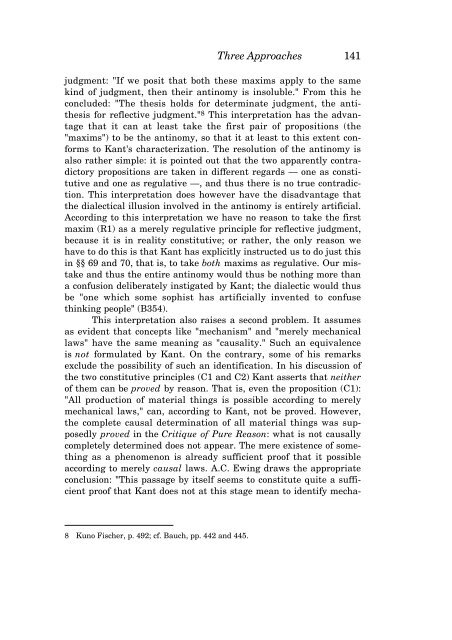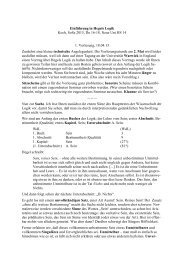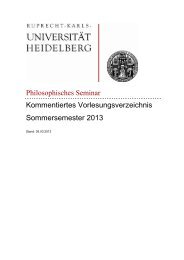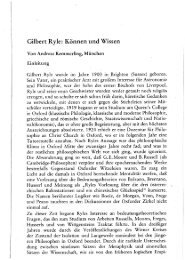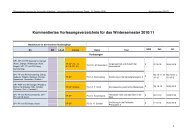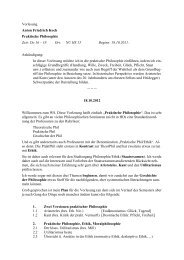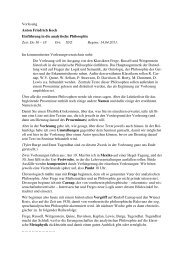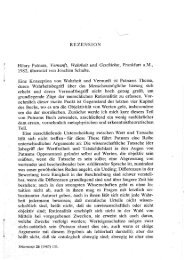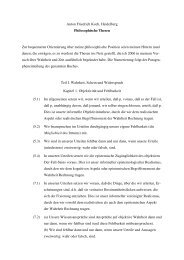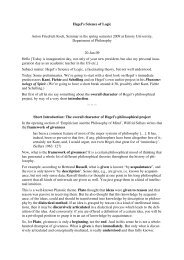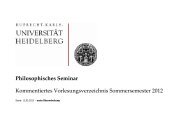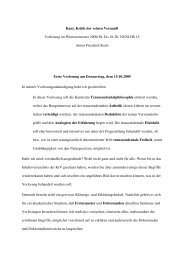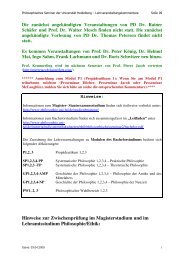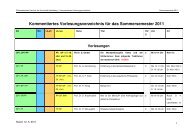KANT'S CRITIQUE OF TELEOLOGY IN BIOLOGICAL EXPLANATION
KANT'S CRITIQUE OF TELEOLOGY IN BIOLOGICAL EXPLANATION
KANT'S CRITIQUE OF TELEOLOGY IN BIOLOGICAL EXPLANATION
You also want an ePaper? Increase the reach of your titles
YUMPU automatically turns print PDFs into web optimized ePapers that Google loves.
Three Approaches 141<br />
judgment: "If we posit that both these maxims apply to the same<br />
kind of judgment, then their antinomy is insoluble." From this he<br />
concluded: "The thesis holds for determinate judgment, the antithesis<br />
for reflective judgment." 8 This interpretation has the advantage<br />
that it can at least take the first pair of propositions (the<br />
"maxims") to be the antinomy, so that it at least to this extent conforms<br />
to Kant's characterization. The resolution of the antinomy is<br />
also rather simple: it is pointed out that the two apparently contradictory<br />
propositions are taken in different regards — one as constitutive<br />
and one as regulative —, and thus there is no true contradiction.<br />
This interpretation does however have the disadvantage that<br />
the dialectical illusion involved in the antinomy is entirely artificial.<br />
According to this interpretation we have no reason to take the first<br />
maxim (R1) as a merely regulative principle for reflective judgment,<br />
because it is in reality constitutive; or rather, the only reason we<br />
have to do this is that Kant has explicitly instructed us to do just this<br />
in §§ 69 and 70, that is, to take both maxims as regulative. Our mistake<br />
and thus the entire antinomy would thus be nothing more than<br />
a confusion deliberately instigated by Kant; the dialectic would thus<br />
be "one which some sophist has artificially invented to confuse<br />
thinking people" (B354).<br />
This interpretation also raises a second problem. It assumes<br />
as evident that concepts like "mechanism" and "merely mechanical<br />
laws" have the same meaning as "causality." Such an equivalence<br />
is not formulated by Kant. On the contrary, some of his remarks<br />
exclude the possibility of such an identification. In his discussion of<br />
the two constitutive principles (C1 and C2) Kant asserts that neither<br />
of them can be proved by reason. That is, even the proposition (C1):<br />
"All production of material things is possible according to merely<br />
mechanical laws," can, according to Kant, not be proved. However,<br />
the complete causal determination of all material things was supposedly<br />
proved in the Critique of Pure Reason: what is not causally<br />
completely determined does not appear. The mere existence of something<br />
as a phenomenon is already sufficient proof that it possible<br />
according to merely causal laws. A.C. Ewing draws the appropriate<br />
conclusion: "This passage by itself seems to constitute quite a sufficient<br />
proof that Kant does not at this stage mean to identify mecha-<br />
8 Kuno Fischer, p. 492; cf. Bauch, pp. 442 and 445.


